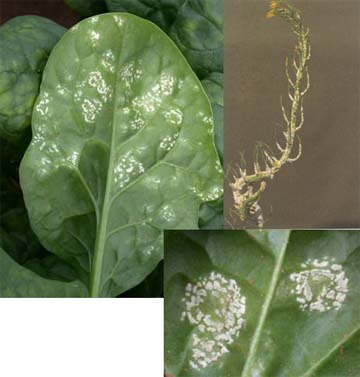Diseases
Diseases
Canola Diseases
Aster Yellow
- Caused by a micoplasma like organism.
- Plants remain in the vegetative state during the entire growing season.
- Flower structures remain green and fail to ripen.
- Spread from plant to plant in the fall by the six-spotted leafhopper.
- There is no practical means of control, but generally less than 2 percent of plants are infected.
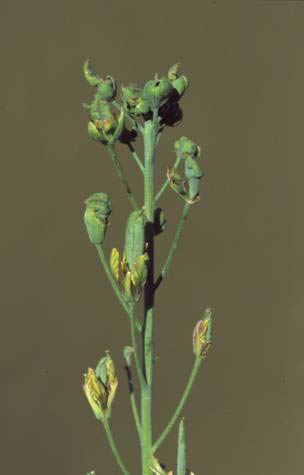
Aster Yellows Questions and Answers
Blackleg (Leptosphaeria maculans)
Tools to Minimize the Potential for Blackleg (pdf)
EPP-7671 Blackleg disease of Canola
(this will redirect you to the fact sheets section of this web site).
- Survives in infected seed, canola stubble.
- Serious infection caused by spores released from infested stubble.
- Introduced into new areas with infected seed.
- Leaf; light green and circular to irregular in shape. Spots become paper-thin and buff-colored with age and contain numerous pycnidia.
- Cankers from in spring after flowering and have lost their potential for compensatory growth.
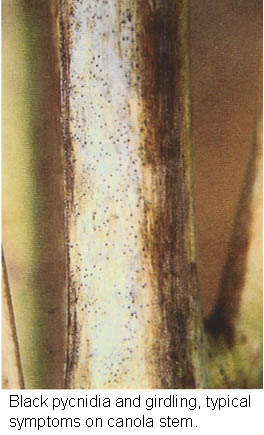
Scleroninia Stem Rot (Sclerotinia sclerotoirum)
- Most severe in warm wet conditions during flowering.
- Soybeans, peanuts, sunflowers are hosts.
- First symptom is prematurely ripened plants.
- Stems are bleached and tend to shred.
- Hard black structures known as sclerotia appear inside the stems near the soil line.
- Symptoms of stem rot appear about 10 to 14 days after infection.
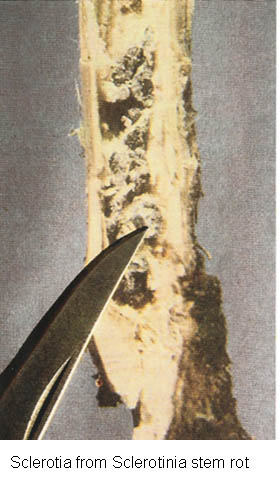
Powdery Mildew (Erysiphe cruciferarum)
- White dusty growth on aboveground plant parts.
- Favored by
- Moderate temperature
- High humidity
- Excessive N fertilizer
- Excessive canopy density
- Should remain a minor disease in Oklahoma
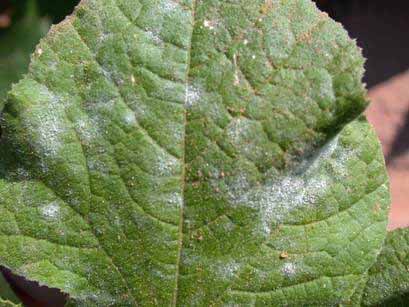
Alternaria Black Spot (Alternaria spp.)
- Yields are affected when pods are split or early infection kills plants.
- Black, brown, or gray spots on leaves, stems and pods.
- Over winters in infested residue and seed.
- Control achieved by sowing clean, disease-free seed or crop rotation.
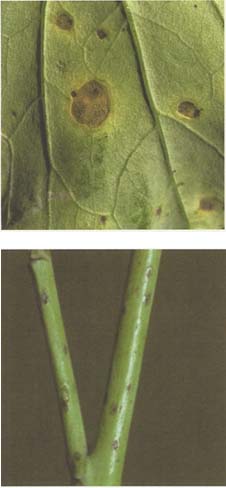
White Rust (Albugo candiada)
- White to cream colored masses appear on the underside of leaves. Raised green blisters form that turn white during wet weather.
- Major symptoms is swollen, twisted and distorted inflorescences called "stagheads" that become brown, hard and dry as they mature.
- Yield losses of 20% have been recorded.
